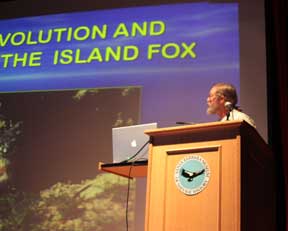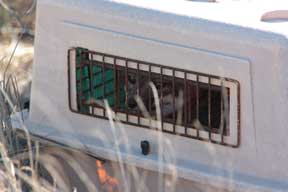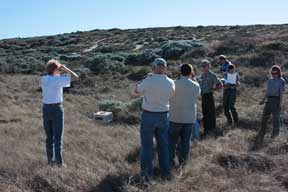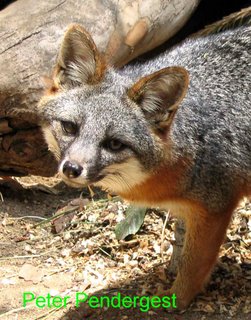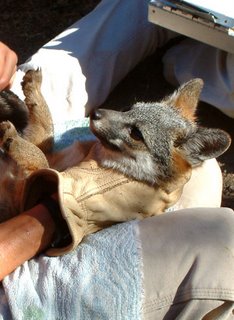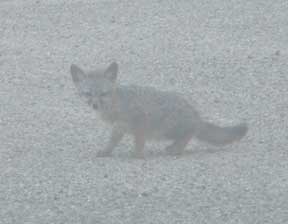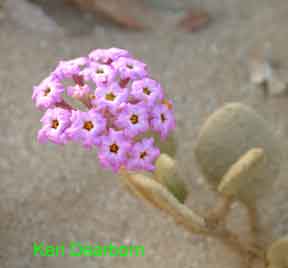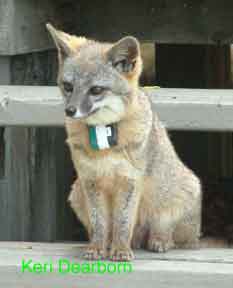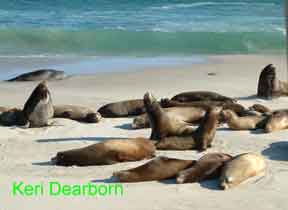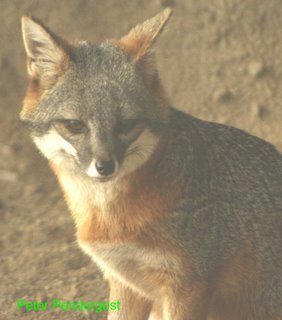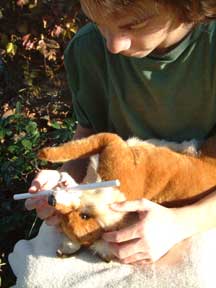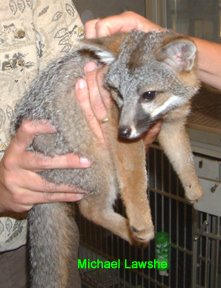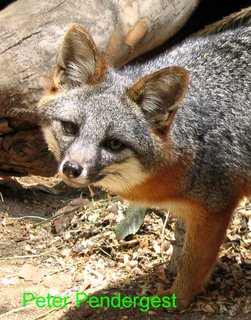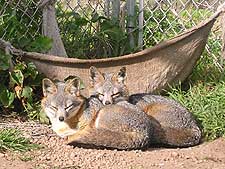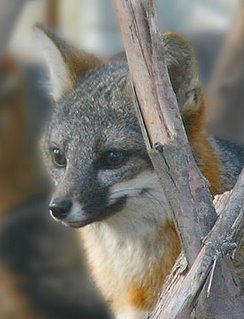How wonderful to see the faces of our friends at Channel Islands National Park talking about the island fox’s rapid progress toward recovery. National Park Service fox biologist, Tim Coonan is a familiar face on the Friends of the Island Fox website.
SEE Tim Coonan releasing island fox M-67 back into the wild.
LISTEN to an interview with Tim Coonan.
Friends of the Island Fox is proud to have worked with Tim and the dedicated people at Channel Islands National Park. Donations to Friends of the Island Fox have supported this successful conservation effort by funding radio tracking collars and den boxes at the captive breeding facility on Santa Rosa Island.
Yes, island fox populations are increasing, but when the NBC reporter said there are 650 island foxes, he was referring to across the three northern islands, San Miguel, Santa Rosa and Santa Cruz. Prior to the decline in the late 1990s, there were over 1,500 island foxes estimated on Santa Rosa Island alone.
The two populations on San Miguel and Santa Rosa, which crashed down to just 15 individuals on each island, are still highly vulnerable. The current estimates are just over 100 island foxes on each of these two islands.
The island fox on San Miguel, Santa Rosa, Santa Cruz and Santa Catalina Island is STILL an endangered species.
Monitoring these populations with radio tracking collars is vital to maintaining the continued success of their recovery. Each radio collar costs $250. Funding is still needed to put radio tracking collars on island foxes.
Canine diseases, distemper and rabies, continue to pose a serious threat to these small isolated populations. Annual health checks and vaccinations against these diseases still need to be funded.
You can help to insure that the island fox continues its historical recovery by donating to Friends of the Island Fox and supporting these continuing important conservation efforts.
WATCH the NBC Nightly News report on the island fox.
http://www.msnbc.msn.com/id/
ADDITIONAL NBC reports on the island fox:
http://www.msnbc.msn.com/id/
http://www.msnbc.msn.com/id/
For More Information on the Channel Island fox. Current Island Fox Information.
About the Channel Islands:
San Miguel Island VIDEO
Santa Rosa Island
Santa Cruz Island
San Nicolas Island
Santa Catalina Island
All six islands with island foxes

